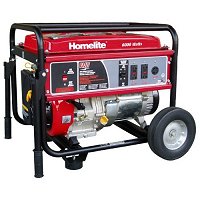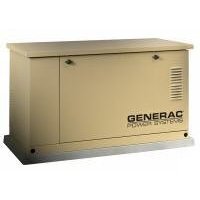How to Buy a Generator
How to Buy a Generator - Portable Generators
 Portable generators are fueled by gasoline or diesel and portable generators include 120-volt power outlets. When the portable generator is running, you can plug appliances and tools directly into these outlets. Some portable generators also include 240-volt outlets. Portable generators are versatile. You can use portable generators for:
Portable generators are fueled by gasoline or diesel and portable generators include 120-volt power outlets. When the portable generator is running, you can plug appliances and tools directly into these outlets. Some portable generators also include 240-volt outlets. Portable generators are versatile. You can use portable generators for:
- emergency portable power at home,
- portable power on jobsites, or in remote locations
- for recreational purposes, like boating or camping.
How to Buy a Generator - Standby Generators
 Standby generators are fueled by liquid propane or natural gas. The number of circuits to which a standby generator can provide power and the number of appliances you can run with a standby generator is determined by the power capacity of that standby generator.
Standby generators are fueled by liquid propane or natural gas. The number of circuits to which a standby generator can provide power and the number of appliances you can run with a standby generator is determined by the power capacity of that standby generator.
Standby generators are about the same size as a standard central air conditioner. A standby generator may cost as little as $1,500 or as some standby generators as much as $15,000 or more. The greater the standby generator power capacity, the higher the cost ...
How to Buy a Generator
How Much Power Do I Need?: There are two basic power measurements for generators: peak power (also known as startup power) and continuous power. Both are measured in wattage. Peak power is the wattage required for appliances at startup or when they are running at their highest levels of power consumption. Continuous power is the wattage required for operation of those appliances under normal load.
Standby Generators: Standby generators create from 5,000 to 25,000 watts or more of power. You'll have to choose a generator that supplies sufficient peak and continuous wattage for the appliances on the circuits you need to power. You can choose between an air-cooled and a liquid-cooled model standby generator. Generally, liquid-cooled models are bigger and create more power.
Portable Generators: A small 1,000-watt portable generator may be all you need for recreational purposes. And you may use up to 8,000 watts if using a generator to power tools on the jobsite. Because you plug appliances directly into a portable generator, you'll also want to make sure that your model has the number and type of outlets you need. The size of the fuel tank also is crucial. The bigger the tank, the longer your generator can run without refilling and produce power.
What Features and Accessories Do I Need? Aside from pure power production, there are some useful features and accessories to consider when buying a generator.
Transfer switch: If you want to use your generator to power your home, you'll need a sufficiently sized generator and a transfer switch. The transfer switch safely closes off the utility power line to your house's electrical system and opens a direct line to the generator and reverses the process when utility power is restored. Standby models can work either with a manual or an automatic transfer switch. The benefit of an automatic transfer switch is that it senses when utility power has been lost and automatically switches to generator power.
Wheeled Frames: As the name suggests, portable generators can be transported to different locations. The smallest portable generators are comparatively light--perhaps 50 pounds--and can be carried. Larger models can weigh as much as several hundred pounds, making a wheeled frame essential for transportation.
Noise: Generators aren't necessarily quiet. Some offer extra features to reduce the noise created during operation.
Weather Protection: Make sure the generator you purchase is suited for the climate in which you'll use it.
|
|




